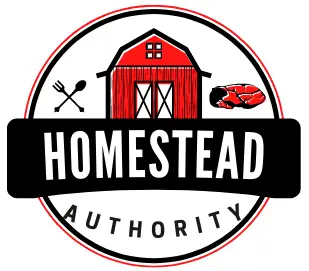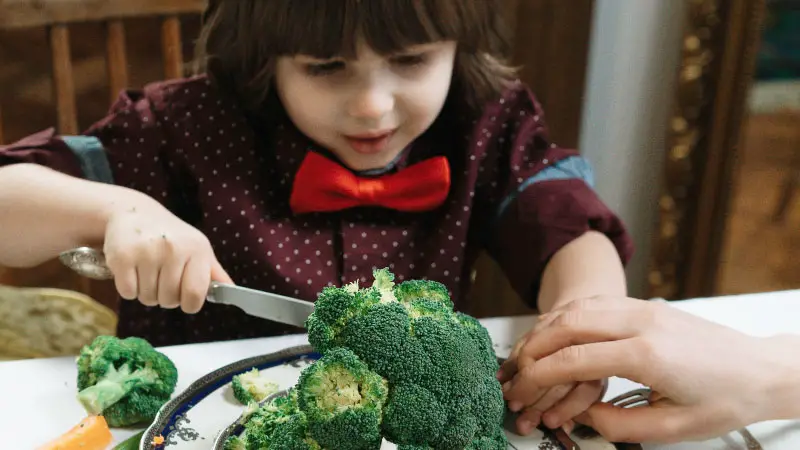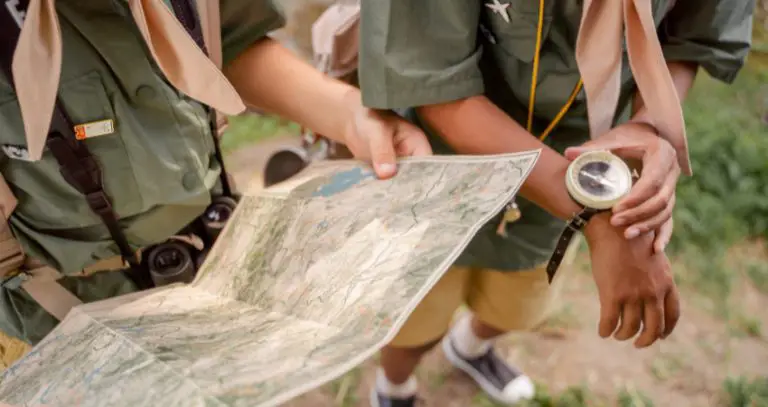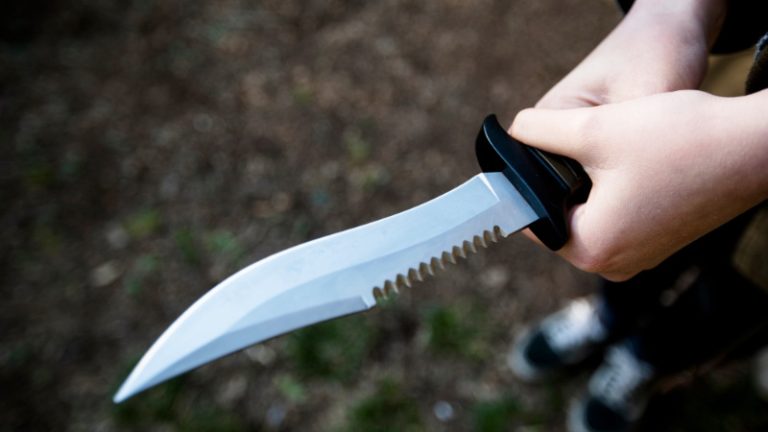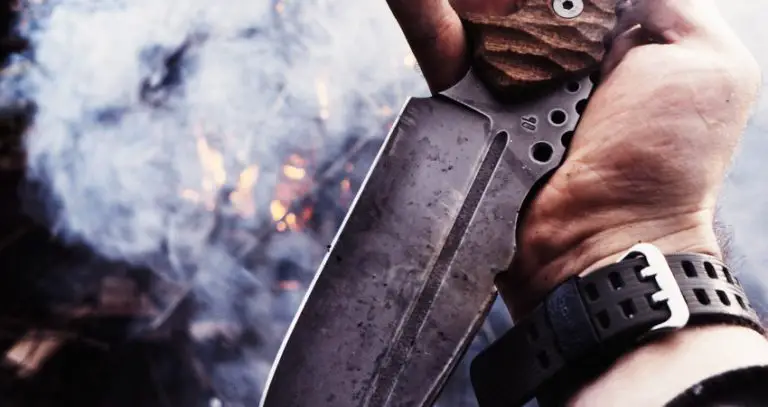Knife Safety for Kids: 5 Important Tips To Consider
Teaching things to kids at a young age is crucial to head-start them in some of the necessary life lessons. However, not every lesson involves safe tools.
Some, like a knife, can cause physical and emotional harm to them. Nevertheless, the kids must learn knife safety because they will need it in the future.
So, how do you ensure knife safety for kids? To ensure their welfare while handling the sharp blades, kids must undertake knife lessons and learn safety tips. The knife lessons include safety and skills required to use it.
The safety tips can include learning about the grip, knife guard, and cutting motion more precisely so they can avoid getting hurt by it.
Kids get curious as they grow, and it’s preferable that parents teach them knife safety tips before they start to explore on their own.
Read on to learn five knife safety tips for kids.
5 Essential Knife Safety Tips For Kids
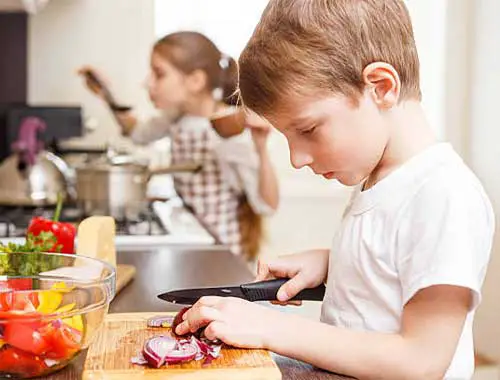
Knife safety includes several techniques and tips your child should learn to be safe. Without these tips, your kid can have a bad experience with knives and develop aichmophobia. Below are some of the knife safety tips you should teach your kids.
To keep things safe, your kid can begin his lessons with a plastic starter knife. Once they adopt the basic safety rules, you can give them a real kitchen knife.
Always Use A Knife Guard
This is the most important tip. You should teach your kid that they should always put the knife on its guard when not in use.
This will ensure the blade cannot harm them if they unintentionally grab it from the wrong side. It will also teach them only to remove it when they need to use it.
Cut On A Wide And Stable Surface
If you’re teaching your kid how to cut using a knife, let them know they must always use a wide cutting board while cutting anything with a knife.
It should be large enough to accommodate all ingredients, and everything should be placed on a flat surface.
The board also needs to be on an anti-slip mat, which can also be a wet cloth. The mat will secure the board from sliding on the countertop when in use.
Keep Your Knife Sharp
A sharp knife is better for preparations if the kid is at the right age. Less force is applied when using a sharp knife, as opposed to a dull one.
This will also give them time and reduce the chances of them hurting themselves. You don’t need to teach them knife-honing skills as yet if they’re too young.
You can sharpen it for them but make sure they understand the difference between a sharp and a dull knife and determine the right knife sharpening time.
Proper Grasping
A claw grasp is safer as it holds ingredients while fingers are tucked away from the knife. So as your kid begins using a knife, teach him the clawed grasp.
With the clawed grasp, the fingers are also more flexible. The finger can also act as knife support while the names are tucked away.
Also, teach them to always carry a knife having the blade pointing downwards.
Start With A Sawing Or Rocking Motion
A beginner kid should be taught to use knives using a sawing or rocking motion. A sawing motion requires the knife to be used as a saw, and it’s pretty safe and easy to start with.
In contrast, with a rocking motion, the knife moves up and down while the tip remains stationary. The reduced tip movements ensure security as the blade stays mostly in one position.
The rocking motion is also used for dicing and slicing, and it’s crucial they practice it early. In the beginning, give your kid some fruits like watermelon, apple, or mango to practice his cutting skills.
Above are some useful tips your child needs to learn about knife handling. While at it, ensure you train them on focusing as well.
Like, for their eyes should always be on the knife whenever they are using it. If they have to look elsewhere, encourage them always to put the knife in the guard first.
At What Age Should I Teach Kids Knife Safety?
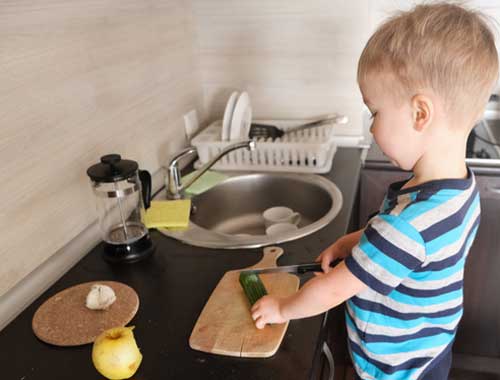
Once they start walking, kids are ready to explore different tools and items in their surroundings.
At first, you can introduce them to a nylon knife to slice bread and vegetables before advancing to a real knife. The age at which you’re confident with them handling sharper blades should be determined by how calm they’re around sharp objects.
At around eight years, most kids are more responsible and can handle sharper tools. However, this should be based on their performance in the earlier knife safety lessons.
The age might vary from one kid to another, depending on their exposure and concentration.
Most importantly, remember to practice what you teach your kids. Kids are sharp and also careful observers.
Even before you train them, they will have picked some habits from you. That said, you need to follow all the instructions you expect them to follow.
FAQ
Most parents always have crucial questions regarding their kids’ knife handling and safety. It becomes nearly impossible to address all the issues that various parents raise. Below are some crucial questions and their well-researched answers.
Why Is Knife Safety Important for Kids?
To fully master the art of knife handling, your kid must know the safety skills. The skills ensure the kid’s safety while handling the sharp blade by allowing them to take precautionary measures. Without this necessary skill, the kids can wound themselves, causing conditions like blood hemorrhage, which can be fatal.
What Are the Risks if a Kid Lacks Knife Safety Skills?
Besides suffering from physical injuries, your kid might develop emotional damage too. Hemophobia is known to develop in people who have suffered blood trauma in their childhood. As a parent, it’s your responsibility to guide and teach these skills to kids at an early age.
Outro
As much as other skills are valuable in kids’ lessons, safety tips are equally so. It’s doubly important when they’re handling sharp blades like knives, which can easily harm them. This skill is crucial even with the high risk of both physical and emotional injury.
Knife safety should be taught to kids from a young age. They can learn these skills using plastic knives before they grow to the right age and handle a real one. The suitable age varies among children and can be determined by their calmness and responsibility around this sharp object.
